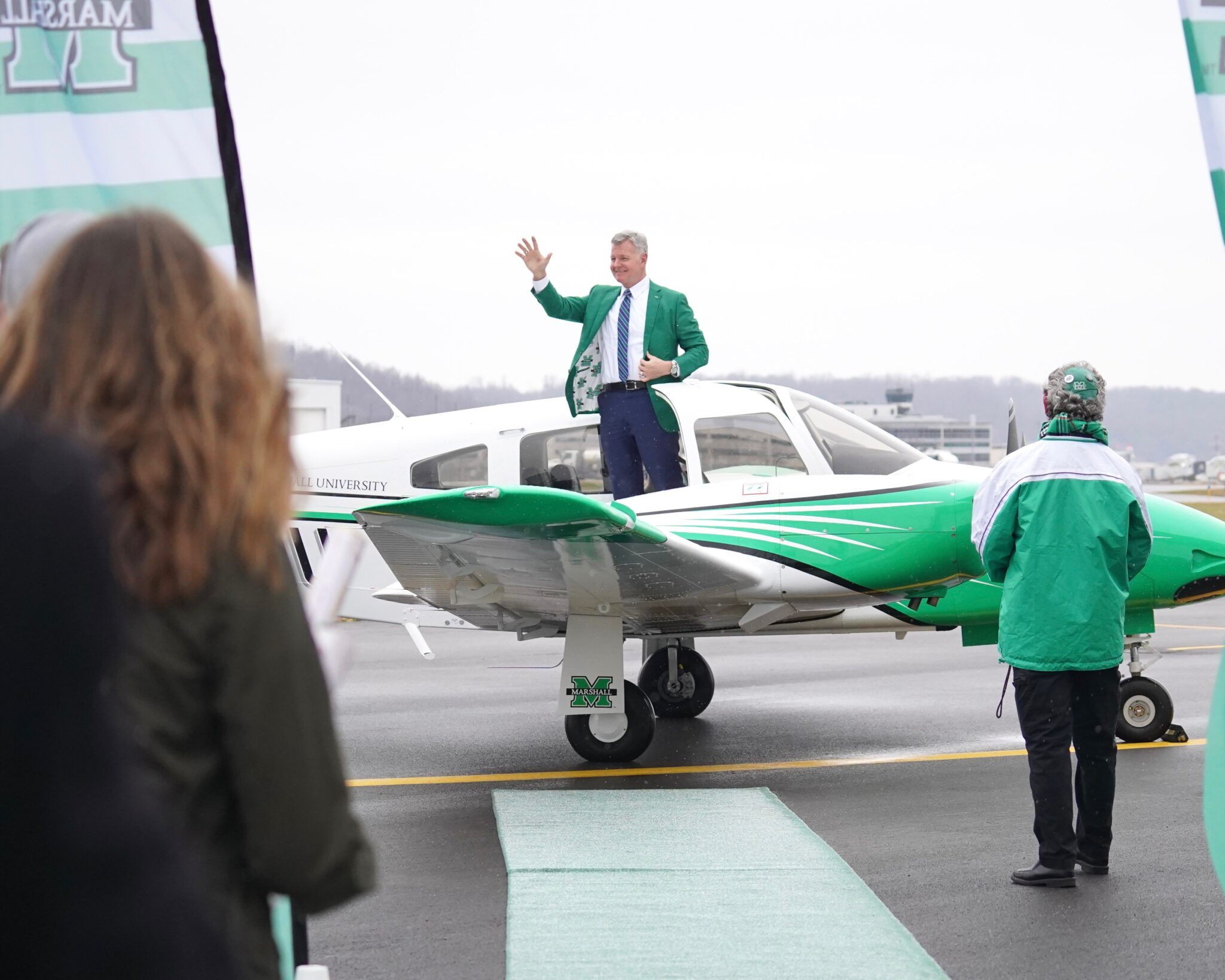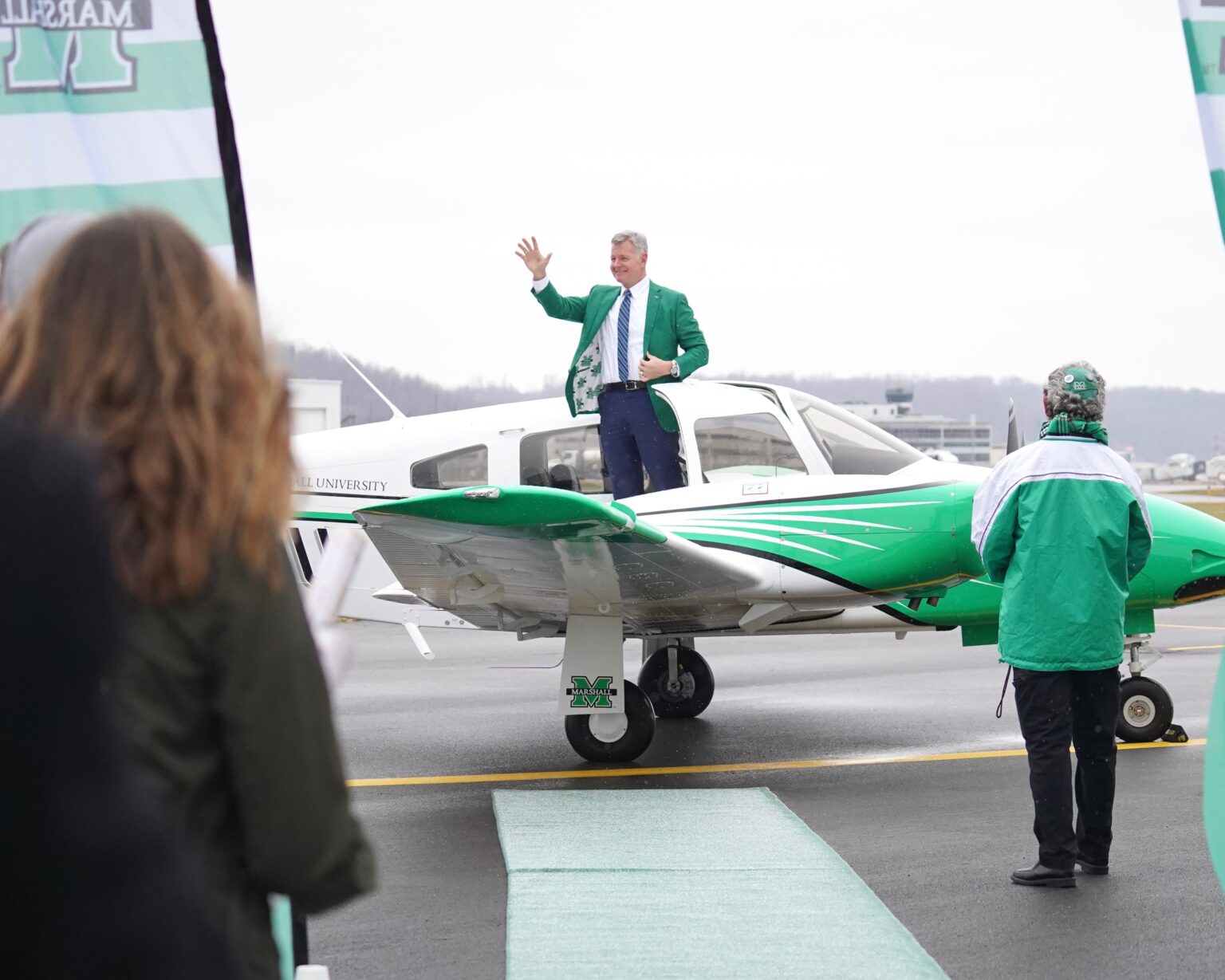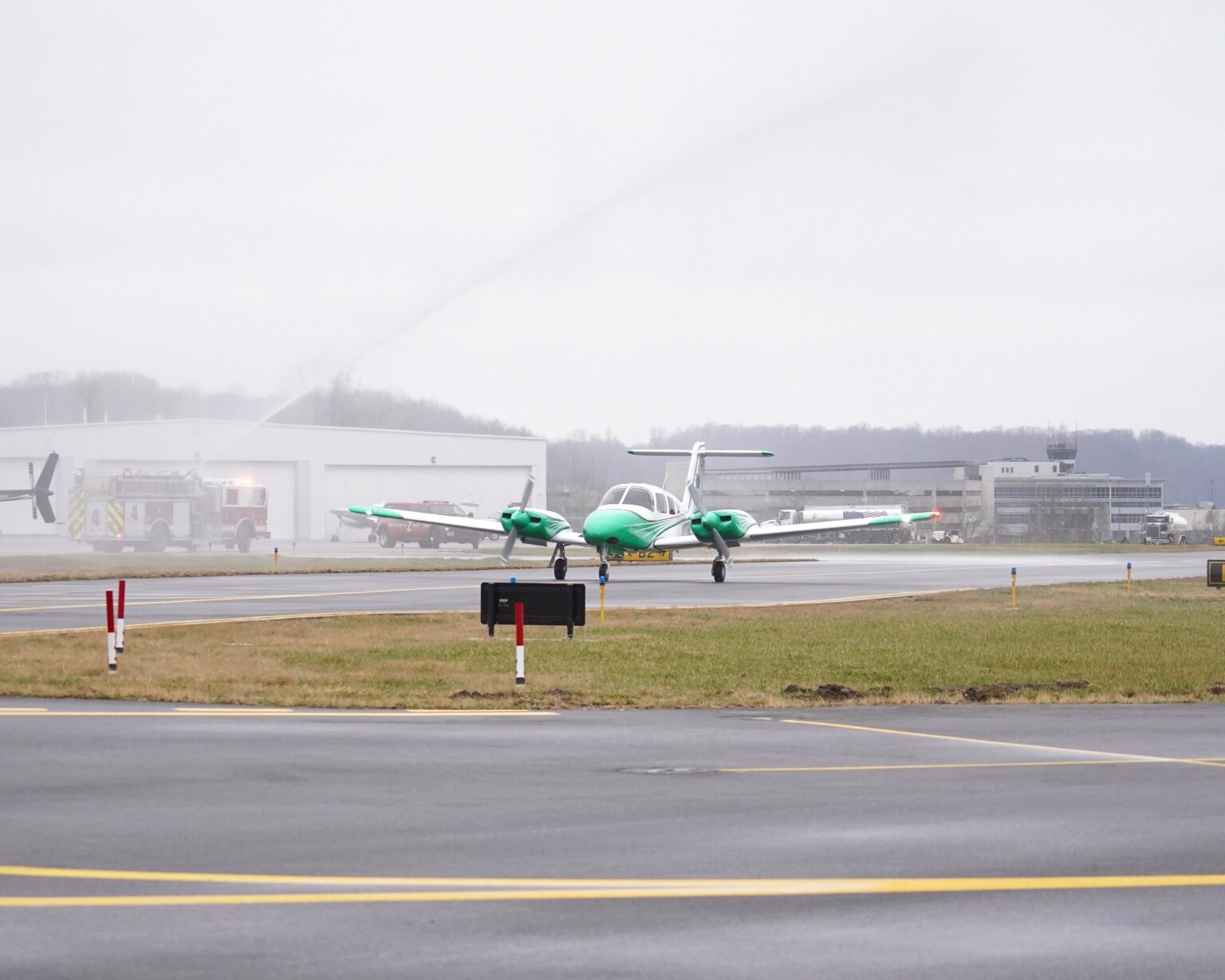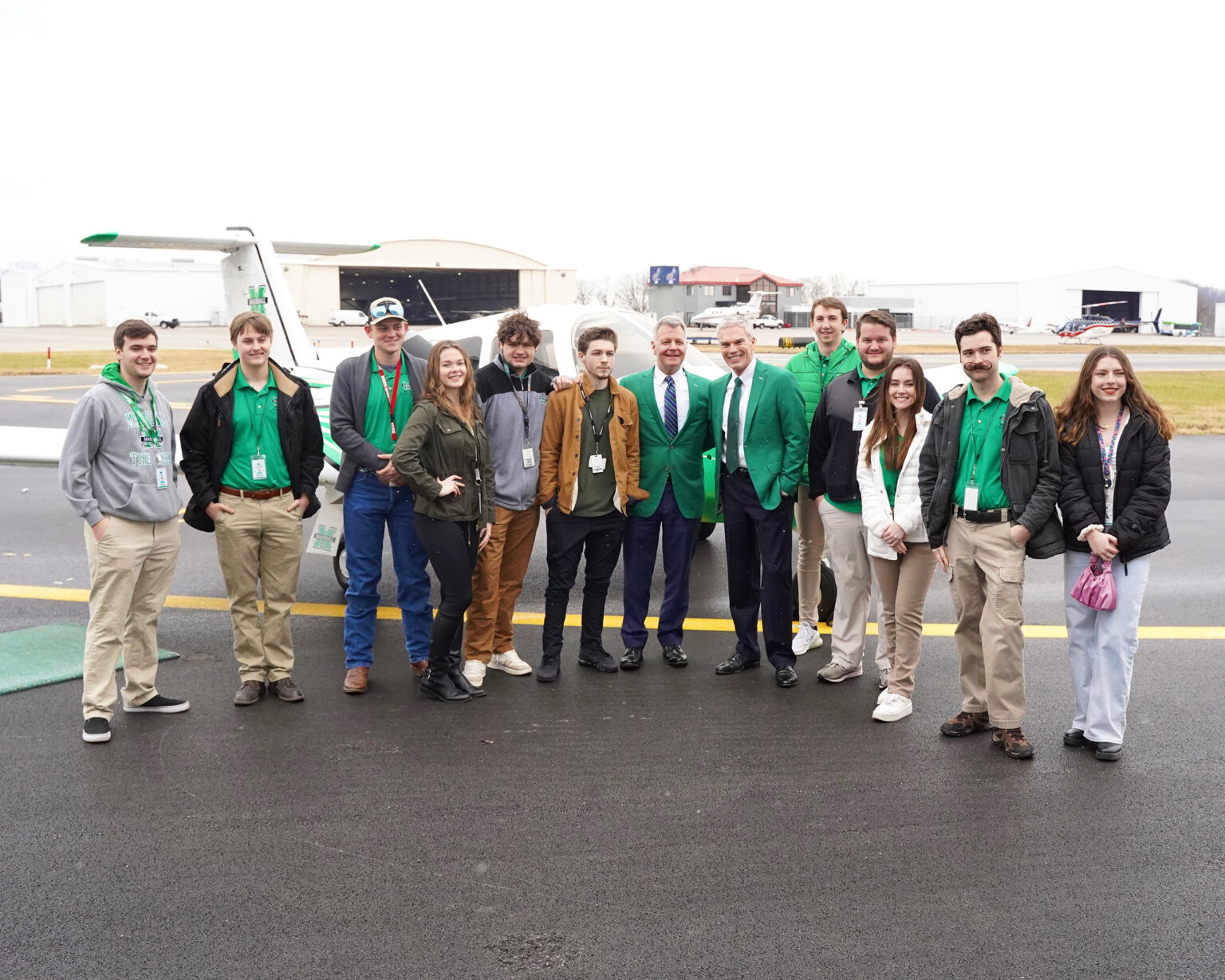CHARLESTON, W.Va. — Even though the flight for Bill Noe began in 80-degree weather in Florida and landed at the snow-showered West Virginia International Yeager Airport (CRW) in Charleston, he couldn’t be happier when he landed.
Noe delivered the first multi-engine aircraft for Marshall University’s flight school, which is named after him. The Marshall-branded Piper Seminole landed on the tarmac around 11 a.m. Friday to a water salute and Marshall officials, students and community members waiting in anticipation.

“The emotional charge I get every time I come up here, I am so humbled. I am full of privilege and pride that Marshall has a flight school,” Noe told the media following a ceremony inside the flight school hangar.
Noe received the plane at Piper’s facility in Vero Beach, Florida to mark the first of its kind at Marshall’s six-month-old flight school. Courses began at the Marshall University Bill Noe Flight School this past fall following an August ribbon-cutting.
Around two dozen students, as part of the first class, have been only working with three Cirrus SR20 single-engine aircraft as part of their path towards a Bachelor of Science degree with a major in Commercial Pilot – Fixed Wing.
Noe explained that having a multi-engine aircraft will open up instruction and take the coursework to the next level. He said it sets up the platform for students to earn an airline transport pilot certificate.
“This takes it to the next level, outside of the flight training environment, we can get our students, our up and coming aviators to a point to where they could step right into a professional aviation job whether that’s with the airlines, military or the business aviation world,” Noe said.
He added from a flight instrumentation standpoint, single and multi-engine aircraft are almost identical, giving the students the ability to transfer of knowledge from one plane to another. However, Noe said the aerodynamic flight characteristics are completely different and that is what makes the learning opportunities exciting.
“They both go up and left and right the same way. But when you have two engines and one engine doesn’t cooperate then you have to compensate for that. In the multi-engines if you lose an engine, you lose 50% of your power but 80% of your performance,” Noe said.
“You have to be able to manipulate the aerodynamics.”
Marshall’s Bill Noe Flight School welcomed its first of several planned multi-engine aircrafts, a Piper Seminole. Noe himself delivered the aircraft to @flycrw this morning.
Learn more about our aviation programs at https://t.co/38vDOqaZYO. #MarshallUAviation #MarshallUFamily pic.twitter.com/hFyConfVGc
— Marshall University (@marshallu) February 18, 2022
Friday marked the near two-year anniversary of the Marshall University Board of Governors approving the purchase of three airplanes for the then-planned program. In May 2018, Marshall and CRW agreed to look at the possibility of starting an aviation school.
Marshall now has a classroom building and a 12,000-square-foot hangar on-site with a projected 200-300 students enrolled in years to come. An Aviation Maintenance Technology program will be housed at Huntington’s Tri-State Airport, pending FAA certification.
Marshall President Brad Smith, who took over as president at the beginning of the year, was at the arrival on Friday and told MetroNews to expect multi-engine announcements in the future.
“We’ve got more, that’s all I’ll say. Keep dreaming bigger and know that is where we are going to be going,” Smith said.






